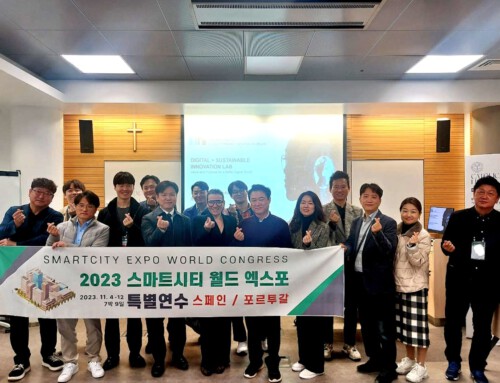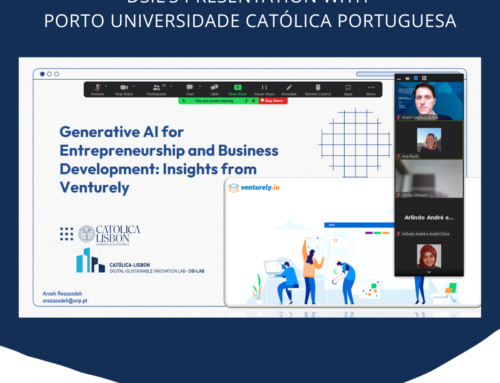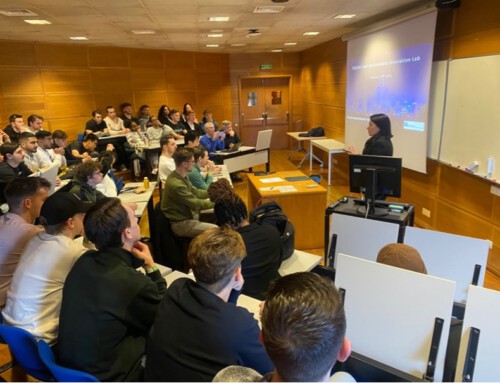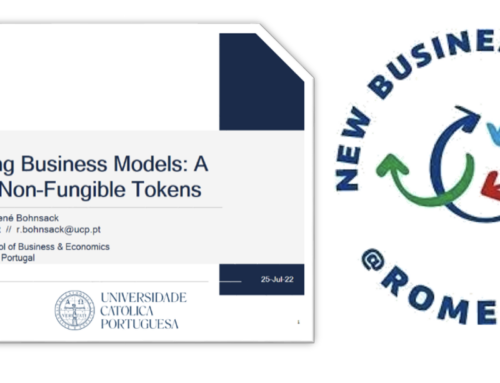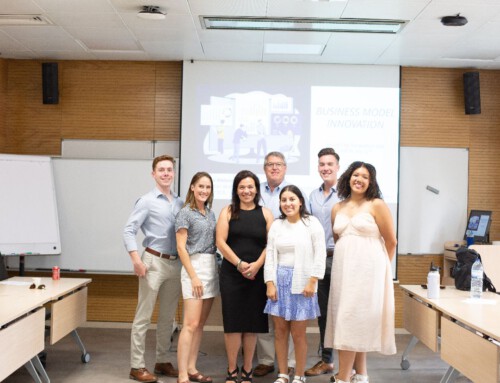In our last article, we compiled seven tips and tricks to give online presentations. Currently, the Smart City Innovation Lab is in the process of organising the GRONEN conference, which will be fully virtual. What started as a pilot project – virtual conferencing to decrease environmental impacts and foster inclusiveness – became now the format of the whole event. There are a lot of adjustments to undertake and in this article, we share some insights we are gaining, especially regarding tasks of the conference host.
Disclaimer: If you have something to add or a comment, please do so! This is a working document to aggregate the knowledge we all are gaining together when migrating to digital 🙂
Remember a talk show you loved watching when you were younger? Why did you enjoy watching it so much? Surely large part of your excitement was (or maybe still is?) because of the host! A host has the central role of connecting presenters with the audience. He or she enacts as facilitator and hence plays a key role in online academic conferences. Consequently, a host who is not well-prepared risks the whole event to become a failure.
Our tips for conference hosts are based on the organisation of an academic conference with 100-200 participants. We assume two session formats:
1) Plenary sessions: over 100 participants with presentations followed by Q&A
2) Paper sessions: approx. 50 participants discussing several papers
While some tips apply to all sessions, some are especially relevant for plenaries while other are more applicable to paper sessions.
Pre-Conference…
1. Adapt your program according to the digital setting
In addition, allow for some buffer time by scheduling online sessions a bit earlier so that every participant has enough time to log into the conference (sometimes it takes more time than expected or one needs to download the software first, etc.). Announce a message with all technical requirements a few days before the session; pinpoint to another browser or updating the browser; pinpoint to a mobile/reduced version of the video call software (if available); Pinpoint to the later upload of the recording of the session (if applicable).
2. Appoint a content chair and a technical session chair
The content session chair covers similar tasks to what would happen in a physical setting, i.e. introducing the presenters and facilitating the discussion. The technical session chair covers tasks related to… (surprise) … technology! This entails among others:
- Onboarding participants
- Implementing and distributing a password for locked sessions
- Explaining the technical etiquette, e.g. muting microphones, engagement through smiley-icons or by clicking the ‘raise your hand’-button
- Taking care of chat messaging during sessions
- Recording and uploading sessions
3. Pay attention to various time zones
Keep also in mind that speakers might even not be in the time zone of their home institution. You can solve this issue by asking from where participants will join in the registration form.
4. Put your speakers at ease regarding the digital setting
In addition, draw the attention of the speakers to increased bandwidth needs in video calls with various participants and refer to websites such as speedtest.net to ensure optimal preparation.
During the Conference…
5. Organise open and closed sessions
For plenary sessions, you can lock your session via password and share this with all participants. For smaller paper sessions, you might consider using the ‘waiting room’-feature of Zoom that allows you have permission rights over who is allowed to join the room. In order to make use of the ‘waiting room’-feature, check if the ‘join-before-host’ feature is disabled. Once the meeting begins and everyone is in, lock the meeting to outsiders. In case the uninvited visitors still make it into the meeting, you can either kick them out or unlock all their features and controls.
6. Get consent before recording and/or taking screenshots
As a host, openly address this issue before the conference and ask for consent before taking recording and/or screenshot. Only start recording sessions after having obtained consent.
When collecting participant data, you must provide each participant with information that is concise, transparent, understandable and easy to access regarding the processing associated with his/her data. The information must be accessible and easy to understand.
Each participant must give his/her consent regarding:
- The collection of sensitive data
- The re-use of data for commercial purposes
- The use of cookies for certain purposes
Consent must be an active, explicit, free, specific, and informed action.
7. Start an open reference list and promote online collaboration
Furthermore, as a host, you can promote the usage of other tech tools for session chairs. Please see here a list of tools, we consider easy to integrate:
- Conduct live online polls via https://www.polleverywhere.com/
- Create virtual whiteboards with https://mural.co/
- Create learning games with https://kahoot.com/
Post-Conference…
8. Circulate chat protocols and other outcomes
In addition, you can ask each session chair for three key takeaways, summarize all takeaways and distribute them in the academic crowd, which leads to the following tip:
9. Connect on a human level by writing a thank you-message
We hope that our tips will provide you with helpful insights for hosting your next virtual academic conference. If you have something to add, please do so below! We are all on this journey together and information exchange is of utter importance!
If you want to find out more about virtual academic conferencing, check out the following websites:


 A full day of online conferencing can be exhausting and even tiring. Adapt your program by making sessions shorter and plan for enough breaks. Maybe even include an optional workout session in the program?
A full day of online conferencing can be exhausting and even tiring. Adapt your program by making sessions shorter and plan for enough breaks. Maybe even include an optional workout session in the program? As a host, you are responsible for the successful completion of the event. Especially online participants might benefit from a more active facilitation. One major aspect we recommend is appointing two session chairs, i.e. a content session chair and a technical session chair.
As a host, you are responsible for the successful completion of the event. Especially online participants might benefit from a more active facilitation. One major aspect we recommend is appointing two session chairs, i.e. a content session chair and a technical session chair. Online academic conferencing fosters inclusiveness as it facilitates that participants can easily join from all around the world without having to leave their office or living room. This confronts the host of academic conferences with the challenge of aligning all time zones. There are various tools that support you in aligning different time zones, e.g.
Online academic conferencing fosters inclusiveness as it facilitates that participants can easily join from all around the world without having to leave their office or living room. This confronts the host of academic conferences with the challenge of aligning all time zones. There are various tools that support you in aligning different time zones, e.g.  Set up a short call with your speakers in advance to understand their goals for the session. This call allows speakers to familiarize themselves with the technical settings. Walk speakers through the online program and highlight adjustments to the new digital setting. You can also refer to the
Set up a short call with your speakers in advance to understand their goals for the session. This call allows speakers to familiarize themselves with the technical settings. Walk speakers through the online program and highlight adjustments to the new digital setting. You can also refer to the  While open sessions are directly accessible, some chairs might prefer to have closed sessions to avoid for instance ‘Zoombombing’. Zoombombing describes the situation when uninvited attendees break into your meeting. Unfortunately, there is not a 100% lock you can put into place, yet there are a few ways to improve your overall privacy level of your virtual sessions. We know it might be tempting to user one meeting-ID for several meetings, but create an individual meeting-ID for each meeting to increase privacy.
While open sessions are directly accessible, some chairs might prefer to have closed sessions to avoid for instance ‘Zoombombing’. Zoombombing describes the situation when uninvited attendees break into your meeting. Unfortunately, there is not a 100% lock you can put into place, yet there are a few ways to improve your overall privacy level of your virtual sessions. We know it might be tempting to user one meeting-ID for several meetings, but create an individual meeting-ID for each meeting to increase privacy. While remote meetings have already achieved a status of normality, it entails various privacy risks anchored in GDPR. One of these risks is that every participant can record sessions and take screenshots without other participants to know. Especially when full names and/or e-mail addresses are displayed on your icon, this exceeds normal privacy rights.
While remote meetings have already achieved a status of normality, it entails various privacy risks anchored in GDPR. One of these risks is that every participant can record sessions and take screenshots without other participants to know. Especially when full names and/or e-mail addresses are displayed on your icon, this exceeds normal privacy rights. Online academic conferencing enables quick and easy collaboration. So, why not take advantage of this by starting on open reference list? You can decide if you want to open a reference list for the overarching topic of the conference or to create several reference lists per track/session. Align with your content and technical chairs, as they can promote this feature.
Online academic conferencing enables quick and easy collaboration. So, why not take advantage of this by starting on open reference list? You can decide if you want to open a reference list for the overarching topic of the conference or to create several reference lists per track/session. Align with your content and technical chairs, as they can promote this feature. Especially, the chat protocol of some online video conferencing platform gets easily forgotten once a session is finished. Yet, oftentimes amazing ideas appear in the chat. Hence, circulate the chat messages from the session so that every partIcicipant can review the comments and references that have been shared. This could be a task of the technical track chair.
Especially, the chat protocol of some online video conferencing platform gets easily forgotten once a session is finished. Yet, oftentimes amazing ideas appear in the chat. Hence, circulate the chat messages from the session so that every partIcicipant can review the comments and references that have been shared. This could be a task of the technical track chair. Summarise the event in a few sentences and thank everyone for their participation. You can also include some numbers that illustrate the scope of your conference (e.g. # of participants from # countries in the world). Furthermore, you can also take the opportunity to promote the next planned conference by attaching a short teaser. And what about an after-conference movie? Share the best and most inspiring moments and don’t forget to include some outtakes as well.
Summarise the event in a few sentences and thank everyone for their participation. You can also include some numbers that illustrate the scope of your conference (e.g. # of participants from # countries in the world). Furthermore, you can also take the opportunity to promote the next planned conference by attaching a short teaser. And what about an after-conference movie? Share the best and most inspiring moments and don’t forget to include some outtakes as well.